Seven days that shook the world: how the horror of Hamas – and Israel’s revenge – unfolded
First there were the rockets. Then gunshots – and next the gunmen came, by quad bike, lorry and paraglider, shooting, killing and kidnapping innocent civilians at a music festival, kibbutz and border villages. Based on eye-witness accounts and verified video footage, Guy Walters tells the horrific story of Hamas’s bloody raid on Israel – and the devastating response that rained down on the people of Gaza

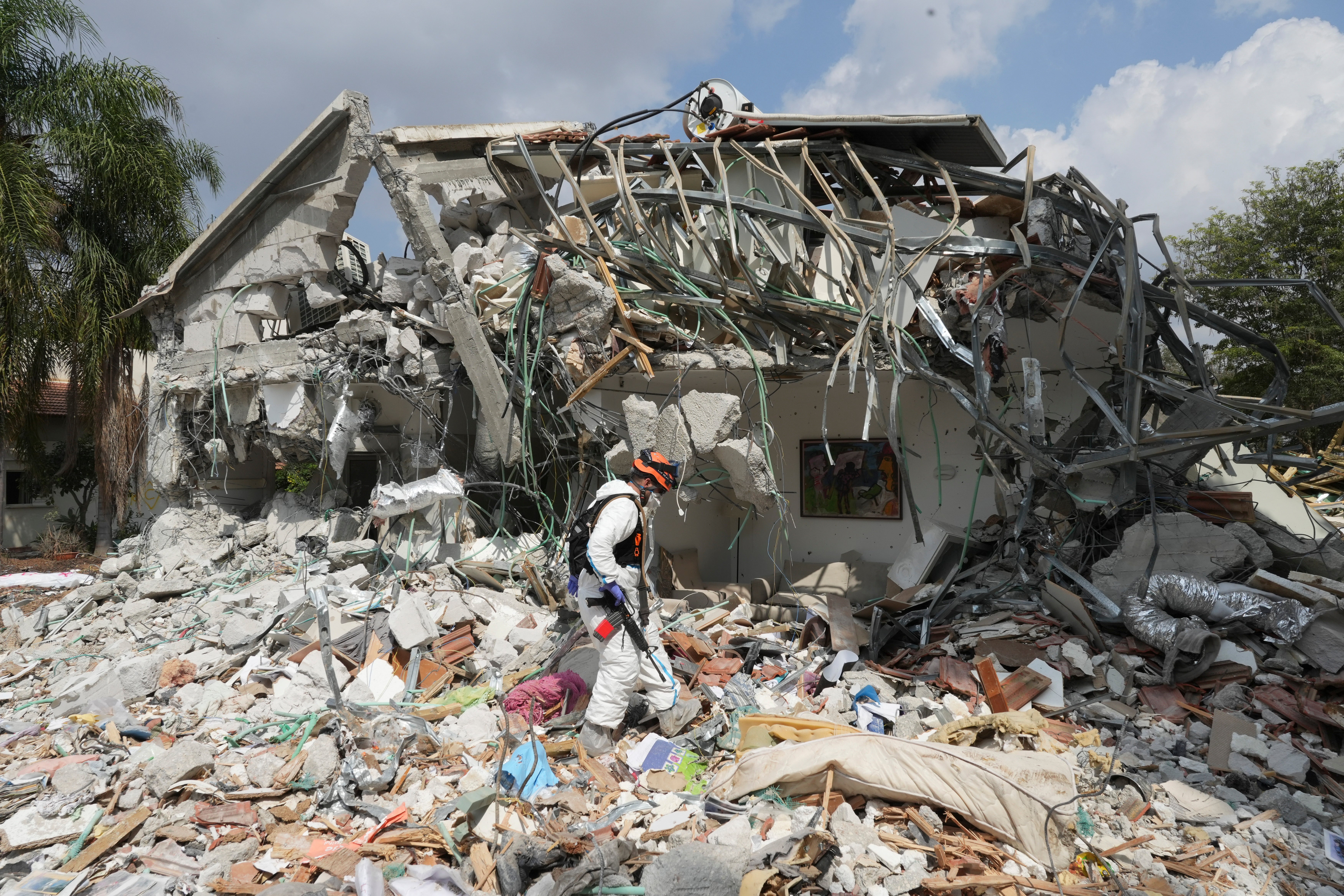
As dawn came up last Saturday, Shani Louk and her friends were still dancing.
The music playing in one of the festival’s tents, with its psychedelic canopy, was “Cupid’s Chokehold” by Gym Class Heroes, a New York rap rock band.
At the age of 30, Shani may be too young to have known that the track is essentially a cover of Supertramp’s “Breakfast in America”, the classic pop song from 1979 about a young man seeking freedom on the other side of the Atlantic.
But then Shani, a German citizen who grew up in Israel, is similarly free-spirited. A tattoo artist with blonde dreadlocks and a piercing through her top lip, Shani had refused to do military service in Israel because of her strong pacifist views.

Her normal attire was very far from the drab green fatigues of the IDF (Israeli Defence Forces) and is, instead, the classic uniform of the nomadic libertine, with a permanent tan, tiny shorts, crop tops, boots, and a melee of jewellery and tattoos to confuse the eye.
Shani’s alternative nature fit right in with her fellow attendees at the Supernova festival, which was billed as part of a series of global festivals held under the umbrella of “Universo Paralello”, a psytrance music festival that had started in Brazil 23 years ago.
Today, the aims of the festival, which can still be seen on an Israeli ticketing website, seem horrifically ironic: “The central driving force behind it is a set of fundamental and important human values: Free love and spirit, environmental preservation, appreciation of rare natural values that the festival embodies.”
Shye Klein Weinstein, a 26-year-old from Toronto had moved to Israel in April and had decided to buy his ticket at the last minute, not out of any great love for trance music, but because his cousin and bunch of his mates were all going, and he didn’t want to miss out on what looked like a fun holiday weekend.
After an hour’s drive, Shye, his cousin and friends arrived at the festival at around 1am, when the party was in full flow, with around 3,500 attendees dancing, taking advantage of the yoga or meditation workshops, or simply just hanging out over a joint and a drink.
“Everybody was happy, making friends, dancing with their friends and just enjoying a good time,” Shye would later tell CBC.
Meanwhile, some were taking the environmental aims of Universo Paralello to heart, and were clearing up rubbish, doubtless left by festival goers who were a little less conscientious than they were. Among them was Maya Alper, a 25-year-old who had been a tank instructor in the Israeli army. As well as tidying, Maya was also dishing out free shots of vodka to those who reused their cups.
And then, at around 6am – with the skies so visible that pilots often call them a “severe clear”, the very same sort of skies, incidentally, that were over the east coast of the United States on the morning of 9/11 – the rockets came.
A kibbutz wakes up
About 10 miles southwest of the site of the festival, and just a mile and a half from the border with Gaza, lies the kibbutz of Nir Oz. Home to around 400, the kibbutz was founded in 1955, and has a reputation for growing excellent asparagus which is sold all over Israel.
One of its oldest inhabitants is Yaffa Adar, an 85-year-old grandmother, who, in the words of her granddaughter Adva Adar, had “founded the kibbutz with both her hands”. Like everybody else that morning in Nir Oz, Yaffa would have woken up looking forward to marking the Sabbath, as well as the end of the Jewish holiday Sukkot.
Also getting ready to celebrate that morning was the Kedem family. Yonatan “Johnny” Kedem, handsome and with a thick head of hair, was an operations manager and grew wheat for the kibbutz and his wife Tamar, a passionate advocate for women’s rights.
One of her friends, Mor Lacob, would later observe that Tamar was “such a special woman, and always made sure that people less fortunate will have the same opportunities”. The couple had three children – two six-year-old daughters, Shahar and Arbel; and son Omer, aged four.
There were also some visitors in Nir Oz that weekend. Among them was Doron Asher, who was visiting her mother Efrat along with her two daughters, Raz, five, and Aviv, three. Doron’s husband, an estate agent, had decided to stay at the family home in central Israel. It was a decision that would prove both fateful and gut-wrenching.
Twenty-five miles northeast of Nir Oz lies another kibbutz called Nir Am, which lies no more than a few hundred yards from the border with Gaza. Founded in the heat of the Second World War in 1943 by members of the Zionist Gordonia movement from Eastern Europe, it ran a cutlery factory that employed about 10 per cent of the 600-strong population.
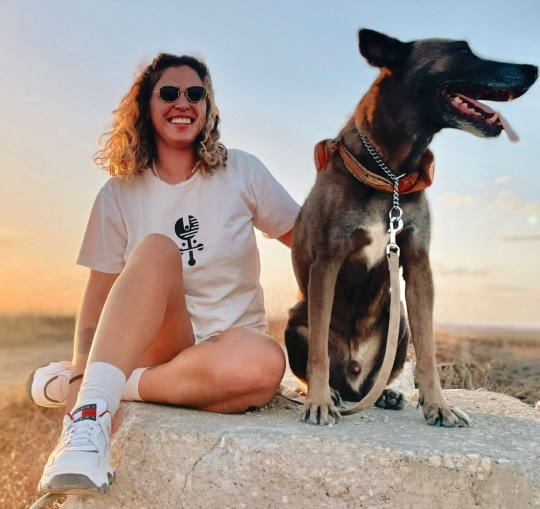
Among the residents was Inbar Lieberman, a 25-year-old member of the security detail in the region since last December. Her social media posts show that Inbal is in many ways typical of her age group, partying with friends and sporting a large tattoo on her right thigh.
Like everybody else, Inbar had woken up that morning with the full expectation that she was going to be marking just a normal sabbath. But as she went about her business, Inbar suddenly heard what she had always anticipated and feared – gunshots. She knew that there was no time to waste, and headed straight for the kibbutz’s armoury.
The Israeli prime minister’s official residence is known as Beit Aghion, and is situated in the upmarket central area known as Rehavia. Its inhabitant would have well known the illustrious history of the house, which was built in the 1930s for a wealthy merchant, and was used as a hospital during the 1948 Arab-Israeli war. As Netanyahu woke up last Saturday, he would have had no inkling that his nation was just hours away from the start of yet another such war.
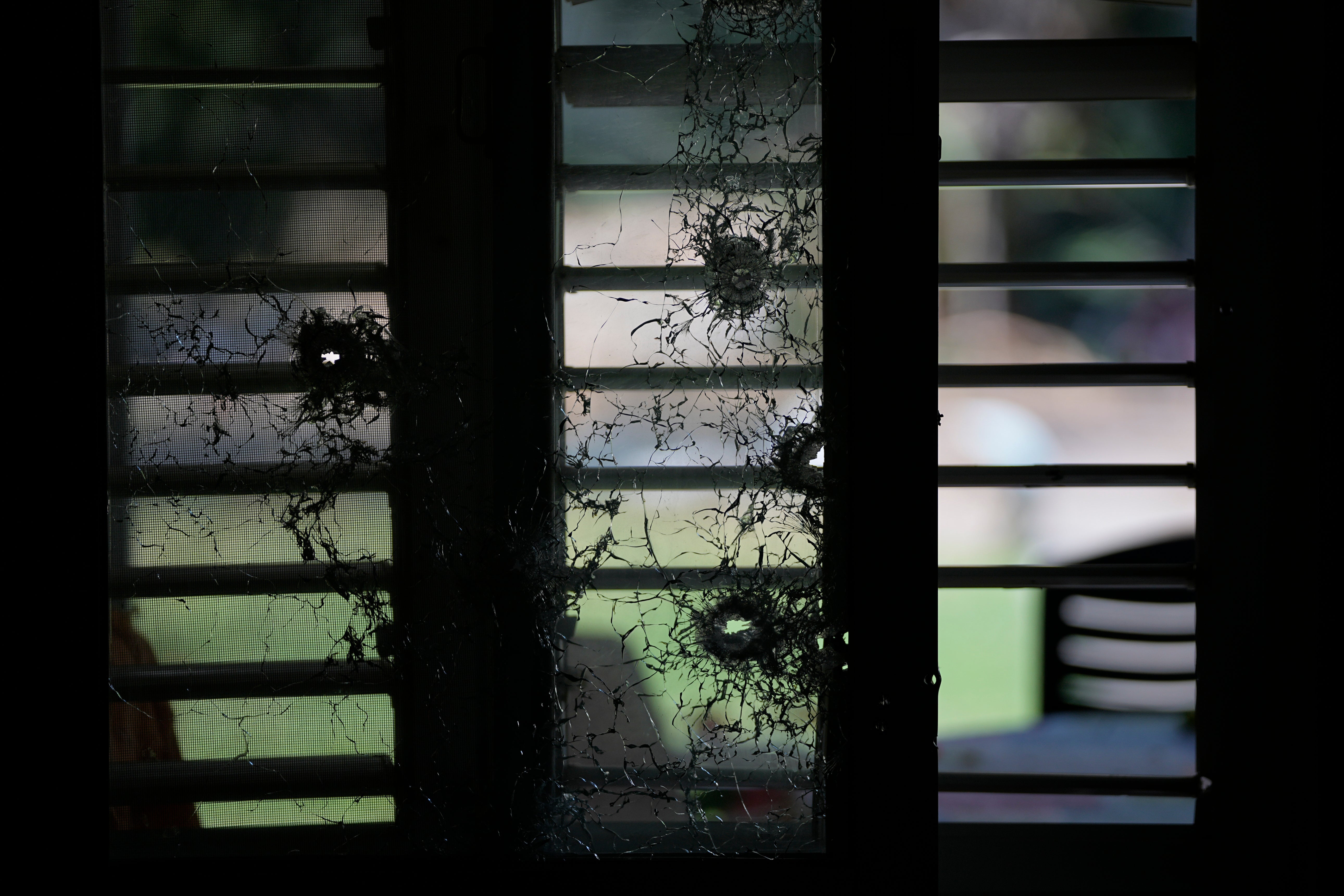
Fighting for survival
As festival goer Shye Klein Weinstein would later explain, a rocket attack on Israel was not something particularly unusual, and besides, most Israelis were supremely confident of the Iron Dome defence system that had, until then, proved so effective at intercepting the short-range rockets flung out of Gaza by Hamas.
“I thought I had time, thinking, ‘It’s just rockets, it’s not a rush’ … Then, just as we’re about to leave, we all start hearing gunfire,” he told CBC. “Then I’m like, ‘We have to go. Now.’”
They ran to the car park and tried to drive out onto the main road. However, the exit was blocked by cars that had been abandoned by those who were now trying to escape on foot. The friends had to come to a quick decision – either abandon the car and run, or drive across the fields. They chose the latter.
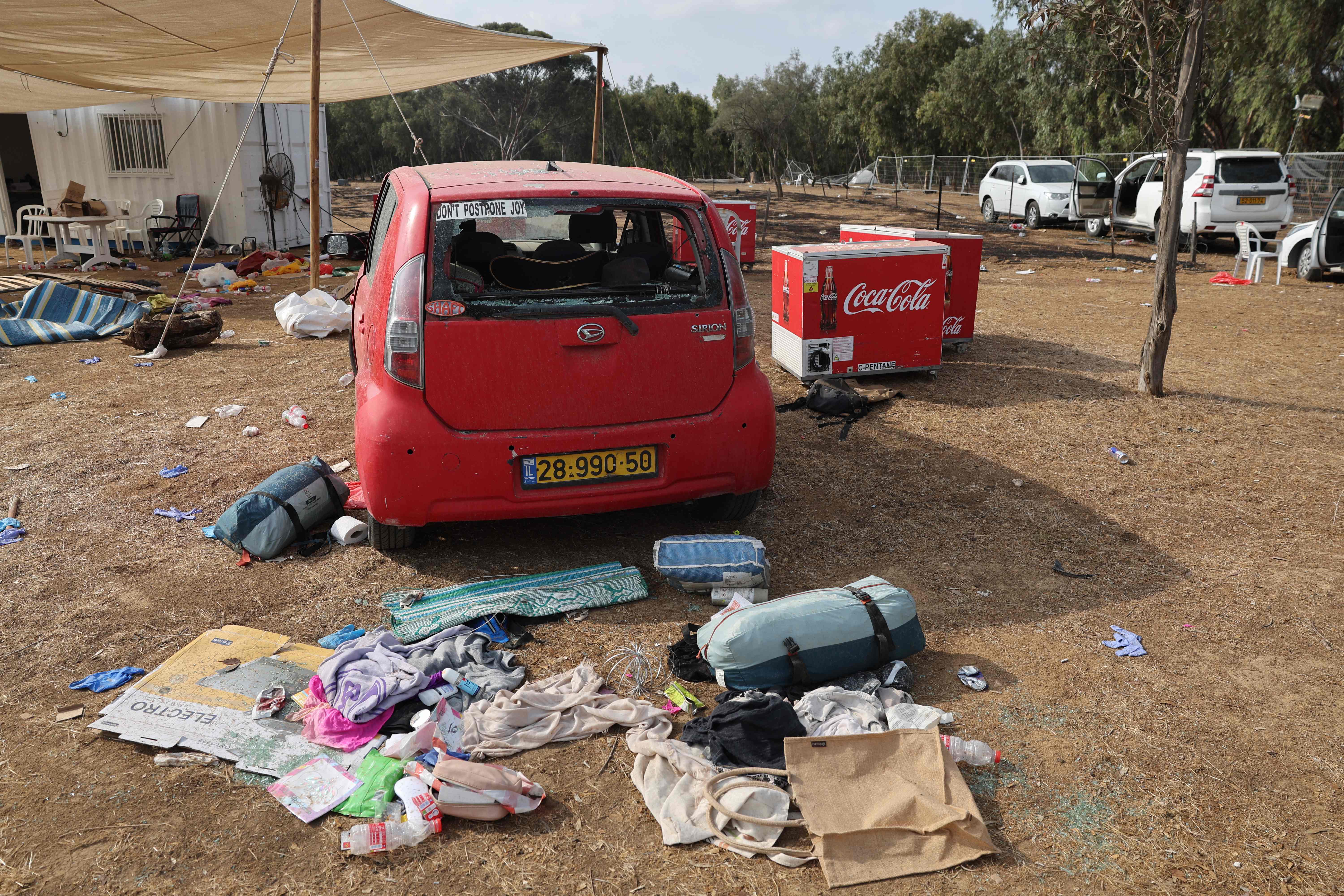
“There’s so much dust in there,” Shye said. “We can’t see. We can’t breathe. Our mouths are dry. Our noses are stuffed. Nobody can see. People are driving this way and that way, and back and forth and everywhere. People are running on foot.” They raced back to Tel Aviv, which they reached at around 8am.
“The whole time I thought, ‘This is it.’ I was just waiting for bullets to fly towards us … But there was no fear during the whole thing. It was just, ‘Get out, get out, get out, get out. Be afraid when you’re back home.’”
Back at the festival site, armed Hamas gunmen had now arrived on motorbikes, lorries, quad bikes, and even paragliders to commit their acts of terror. It was then that the killings and kidnappings started, some of which were filmed by the attackers themselves, or by the dashcams of festival goers’ cars.
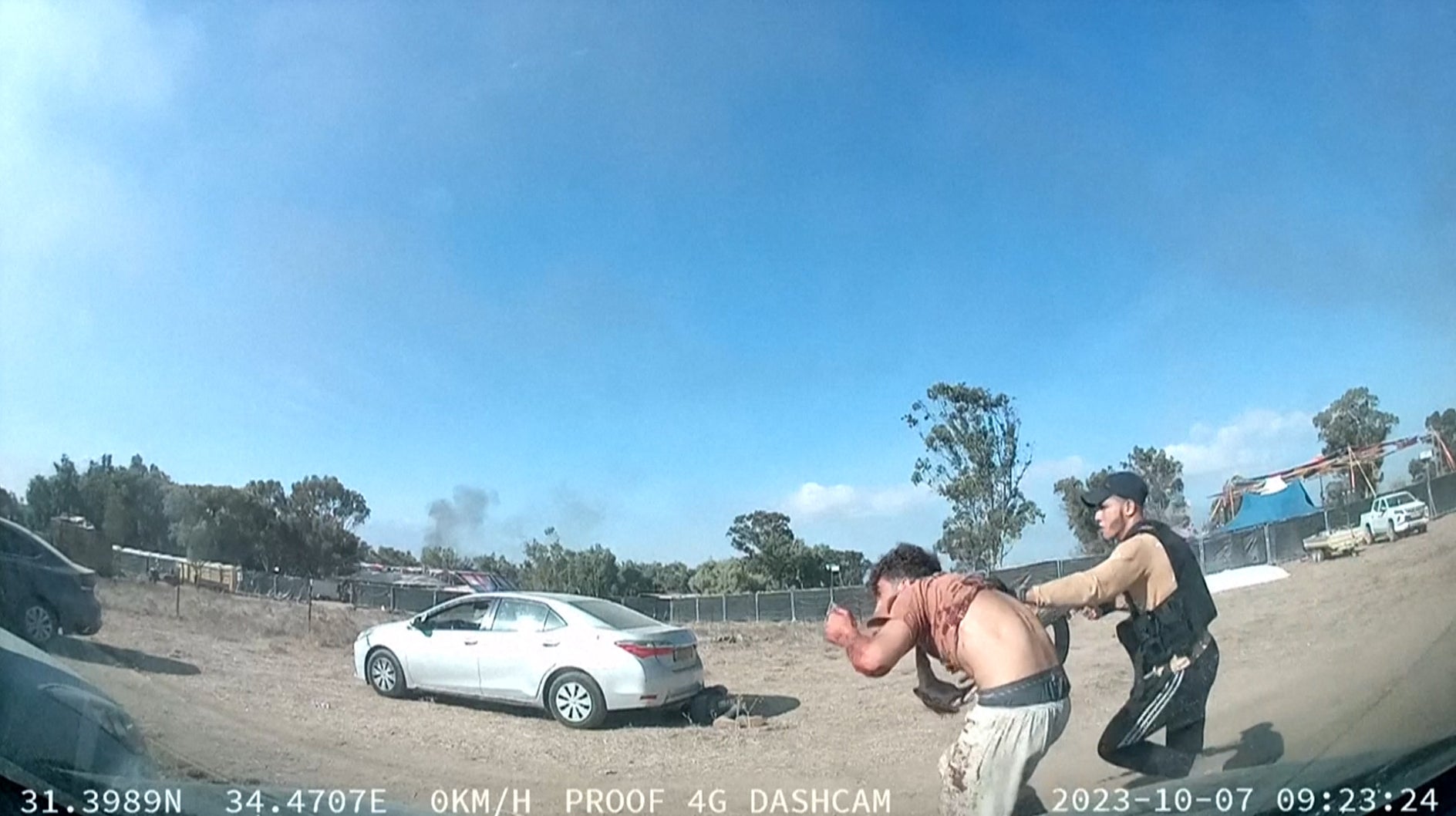
In one dashcam sequence captured at precisely 9.23am, a gunman’s eye is attracted to a person moving below a white saloon car, causing him to rush forward and then casually shoot the person in the head. Just under three hours later, at 12.09, the pockets of the corpse are rifled through by an armed attacker, who notices that there are people inside the car.
These are a man and woman, who are bundled out by the members of Hamas, who then frogmarch them away and out of shot. At 12.14, the woman can be seen to the left of the frame, her arms in the air, but clearly pleading in some way.
A few seconds later, by 12.15, a wall is clearly hit by gunfire, which suggests that the man has been murdered in a hail of bullets. The woman collapses in a state of distress, as she has clearly just witnessed the murder of her boyfriend, husband or close friend.
Trying to flee the slaughter and carnage was Maya Alper, who had bundled some fellow festival goers into her car. Maya managed to get to the road, but she found it blocked by people on foot telling cars to turn round.
She then heard what she thought were firecrackers, but the grim realisation of what the noises were emerged all too quickly, as people started falling in front of the car into pools of their own blood. Maya managed to reverse away, but it became clear that driving was going to be impossible.
Maya sprinted towards some bushes, with a bullet narrowly missing her left ear. She found refuge in a thorny bush while scores of others were taken to Gaza, the moments of their abduction now forever preserved in videos.
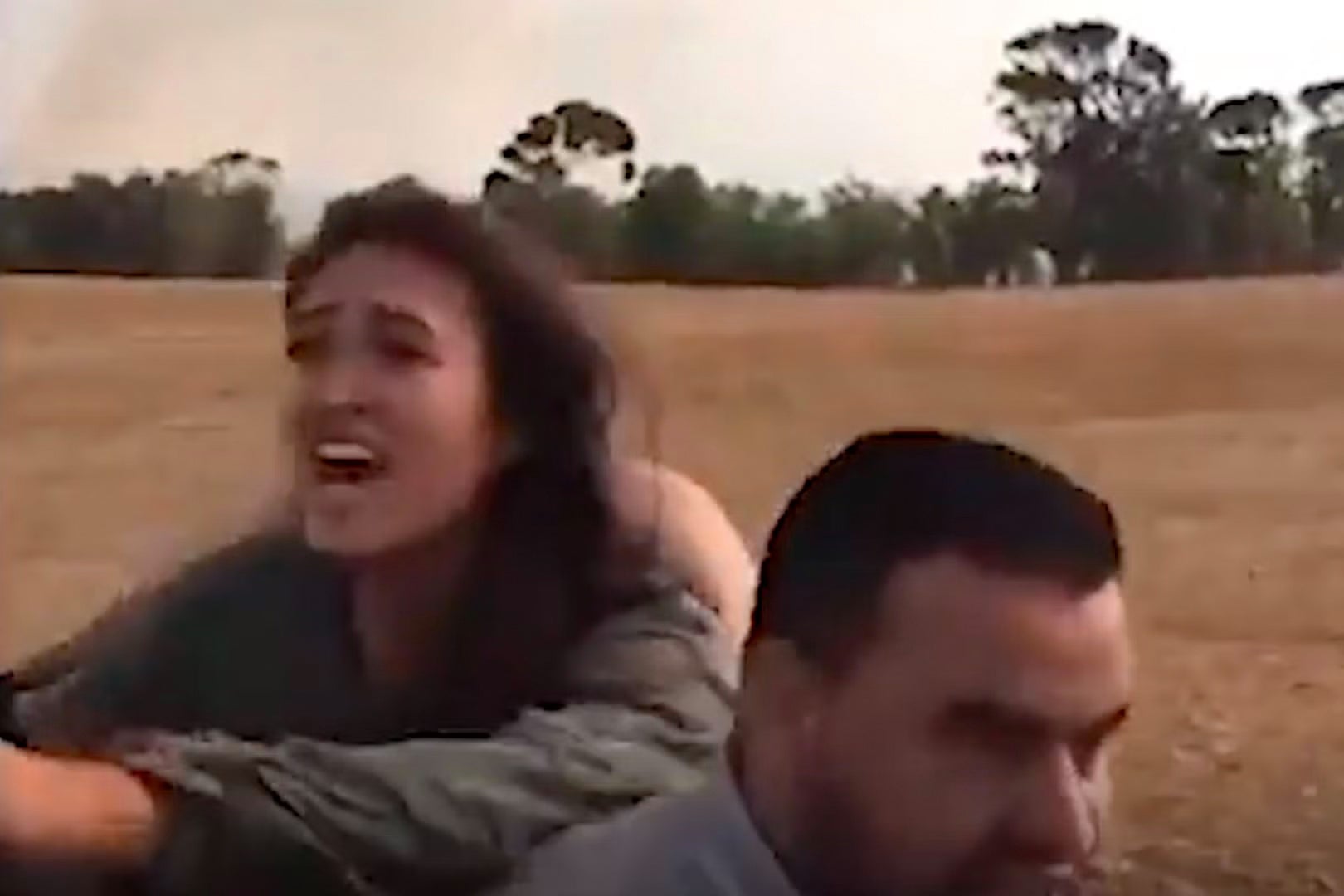
One of those being 25-year-old China-born Israeli student Noa Argamani, who was seen being driven away on a motorbike pleading not to be killed, while her boyfriend Avinatan Or is led away by their attackers, either to be murdered or kidnapped. Noa did not tell her parents that she was going to the festival, because she did not want them to worry.
While all around her people were being murdered and abducted, Maya – who is a keen practitioner of yoga – kept as still as possible. It saved her life, and she was rescued some hours later by a group of Palestinian citizens of Israel, who were looking for survivors. They took her to a police station, where she collapsed into her father’s arms.
Maya was one of the lucky ones. But Shani Louk undoubtedly was not. There is no testimony from her for the simple reason that the next video we see of Shani is not that of a carefree rebellious spirit dancing under a psychedelic canopy, but that of her stripped and broken body being spat on and defiled in the back of a pick-up in the grim grey streets of Gaza.
The parents of Shani Louk have told the German newspaper Bild that their daughter is still alive, which came as a surprise to many people who had seen the video.
“We now have evidence that Shani is alive but has a serious head injury and is in critical condition,” said Shani’s mother Ricarda, before insisting that the German government should launch an operation to get her daughter out of Gaza.
A family’s worst fears
We still do not know precisely what happened at the Nir Oz kibbutz that morning. But what we do know is that, at some point, Hamas entered into the settlement and started what can only be described as a pogrom.
Alerted by the sounds of gunfire, the Kedem family rushed to the safe room in their house, from where they started sending WhatsApp messages to friends. Among the recipients were some friends in Sydney called Yishai and Mor Lacob. “Hi guys, we got into the shelter in our house, we’re all going [sic] okay,” the first message read.
The conversation continued for about an hour. It is too painful to imagine the terror felt by that young family, as they could hear the sounds of butchery around them, and the screams of those being kidnapped.
Among those was Yaffa Adar, who had been snatched and put into what looked like a golf buggy with a pink blanket around her. Videos posted online show her face contorted into a strange smile of defiance, her chin thrust out.
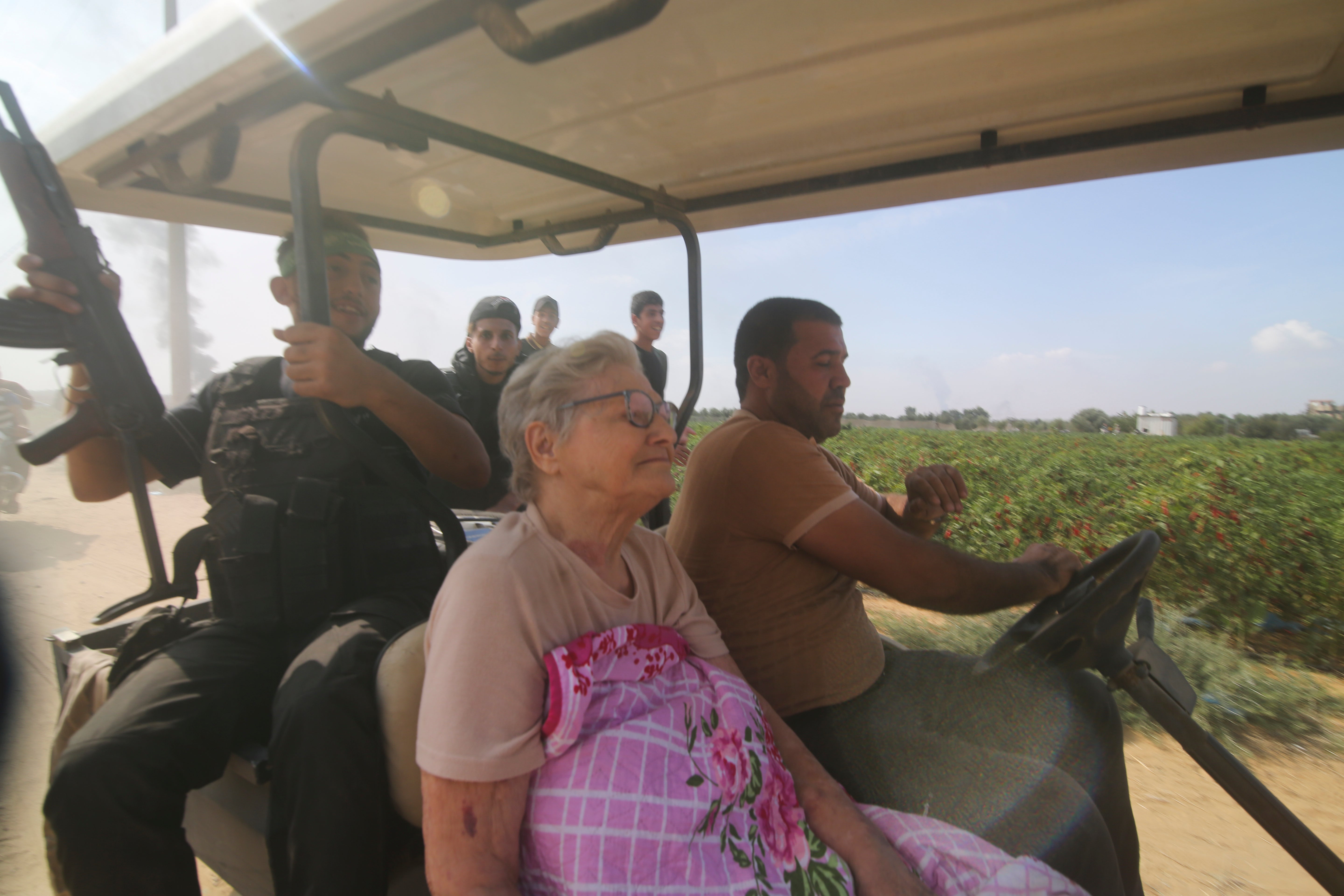
"At 9am she texted us that there are terrorists in the roads of the kibbutz shooting, shouting,” her granddaughter Adva said. “That’s the last message we got from her and then we lost contact.”
“I have other family that lives in the kibbutz, so we heard from them the horrible things that are happening, that people are getting killed and kidnapped and houses are getting broken and burned to ash.”
At some point that horrific morning, the home of the Kedem family was broken into. In Sydney, Yishai and Mor Lacob found that their messages were going unanswered.
“It started to get really scary,” Mor Lacob told the Sydney Morning Herald. “We’re trying to call her, message her. We were trying to speak with people there … people we might know in this area, we were harassing everyone.”
The worst fears of the Lacobs would be realised, as all five members of the Kedem family were butchered. As a message later posted on social media by the Israeli government was to put it: “There are no words”.

It is estimated that some 240 members of the Nir Oz kibbutz that morning were either killed or kidnapped. Snatched away and taken to Gaza were Doron Asher and her two daughters Raz and Aviv. Their fate would be learned by their husband and father, Yoni, when he saw a viral video showing terrified Israeli women and children being bundled into the back of a car, surrounded by Palestinians shouting ‘God is great!’”
“I saw she had been taken into Khan Younis which is deep inside Gaza,” Yoni said. “The GPS even showed us the route the terrorists took.”
A heroic act
Up at Nir Am, Inba Lieberman’s quick thinking was beginning to pay off. After getting to the armoury of the kibbutz, the 25-year-old distributed weaponry to the 12-strong defence team, and placed them in positions from which they could ambush the heavily armed Hamas gunmen. In doing so, Inba had gone against her orders which were merely to remain on standby.
Her disobedience would save her community, because over the next four hours, Inba and her team brought the fight to the enemy. None of the residents were injured, while it has been reported as many as 25 bodies of their attackers were found after a furious fight, with five of them being killed by Inba herself.
“When it’s all over, this woman will receive the Israel Prize,” read one post on social media. “The story of her heroism is a story that will go down in Israeli lore for generations. Inbal is the reason there is one kibbutz in the entire surrounding area that remains unharmed – Nir Am.”
The Israeli response
During the course of the day, it emerged that what was happening was a full-spectrum assault by Hamas. Tanks and other vehicles were destroyed by drones carrying munitions, army positions were overrun, their defenders either killed or kidnapped and then paraded on social media, fences and walls were bulldozed through, and thousands of rockets were launched at targets all over Israel.
One man who was starting to realise the appalling gravity of the situation was Benjamin Netanyahu. At 11am, the prime minister stood outside the Defence Ministry in Tel Aviv, and spoke to his people while wearing an open-necked white shirt and a dark blue jacket with an Israeli flag on a lapel.

“Citizens of Israel, we are at war,” he announced. “Not an operation, not a round of fighting, at war! This morning Hamas initiated a murderous surprise attack against the state of Israel and its citizens … I am initiating an extensive mobilisation of the reserves to fight back on a scale and intensity that the enemy has, so far, not experienced. The enemy will pay an unprecedented price.” By Monday, Israeli defence minister Yoav Gallant had ordered a “complete siege” of Gaza, saying the government would disconnect electricity and prevent food and fuel from entering the territory.
Into Gaza, into the abyss
The retaliation started from the air, with the Israeli Air Force mounting hundreds of rockets into Gaza in an attempt to neutralise Hamas. But as is inevitable when bombing one of the most densely-populated places on earth, civilians are going to be killed and maimed. Among those dealing with the huge number of casualties is Dr Ghassan Abu-Sittah, a British plastic surgeon who had flown out from London to volunteer at the Al-Shifa hospital, where he witnessed the “absolute devastation” of Gaza, and a “tsunami of wounded people”. And because the average age in the territory is just 18, that means that many of those people hit by the Israeli bombs are children.
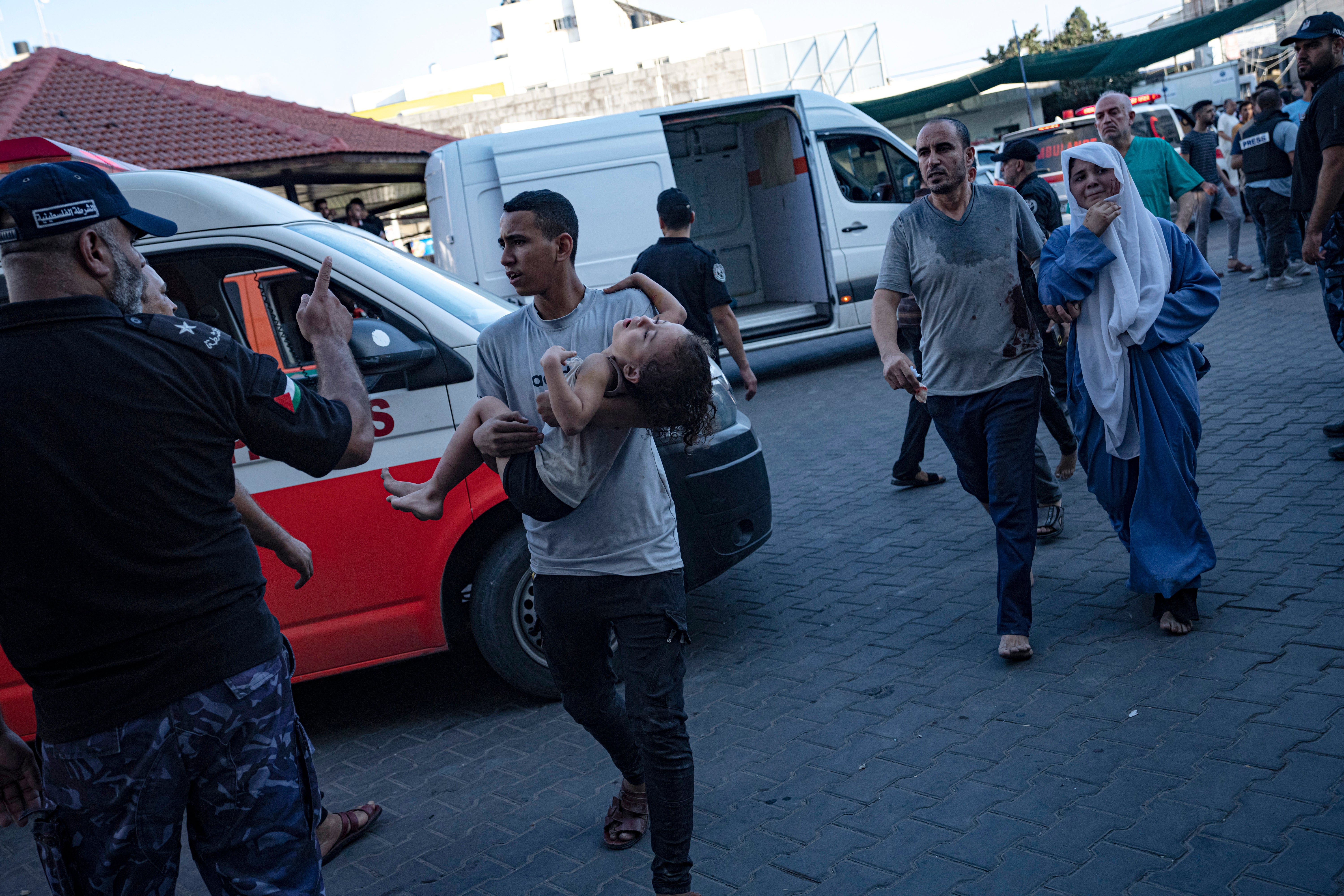
Dr Abu-Sittah told TheIndependent how one of his patients was a 14-year-old girl with 70 per cent of her body – including her face – burned by explosions as well as by the chemicals in the munitions used by the Israelis. “She is unrecognisable. The most common injury we deal with are burns. But we also see a lot of blast injuries and shrapnel,” he said.
Dr Abu-Sittah also recounted how treated a five-year-old with crush injuries, a nine-year-old with facial burns and a 14-year-old boy with a compressed open fracture of the skull.
“The boy, with the open fracture, his parents have died,” he said among chaotic scenes at the hospital. “He’s completely on his own. A lot of these kids are now on their own, they were in their homes when they were attacked and they’ve lost their parents. They’re too shocked to speak.”
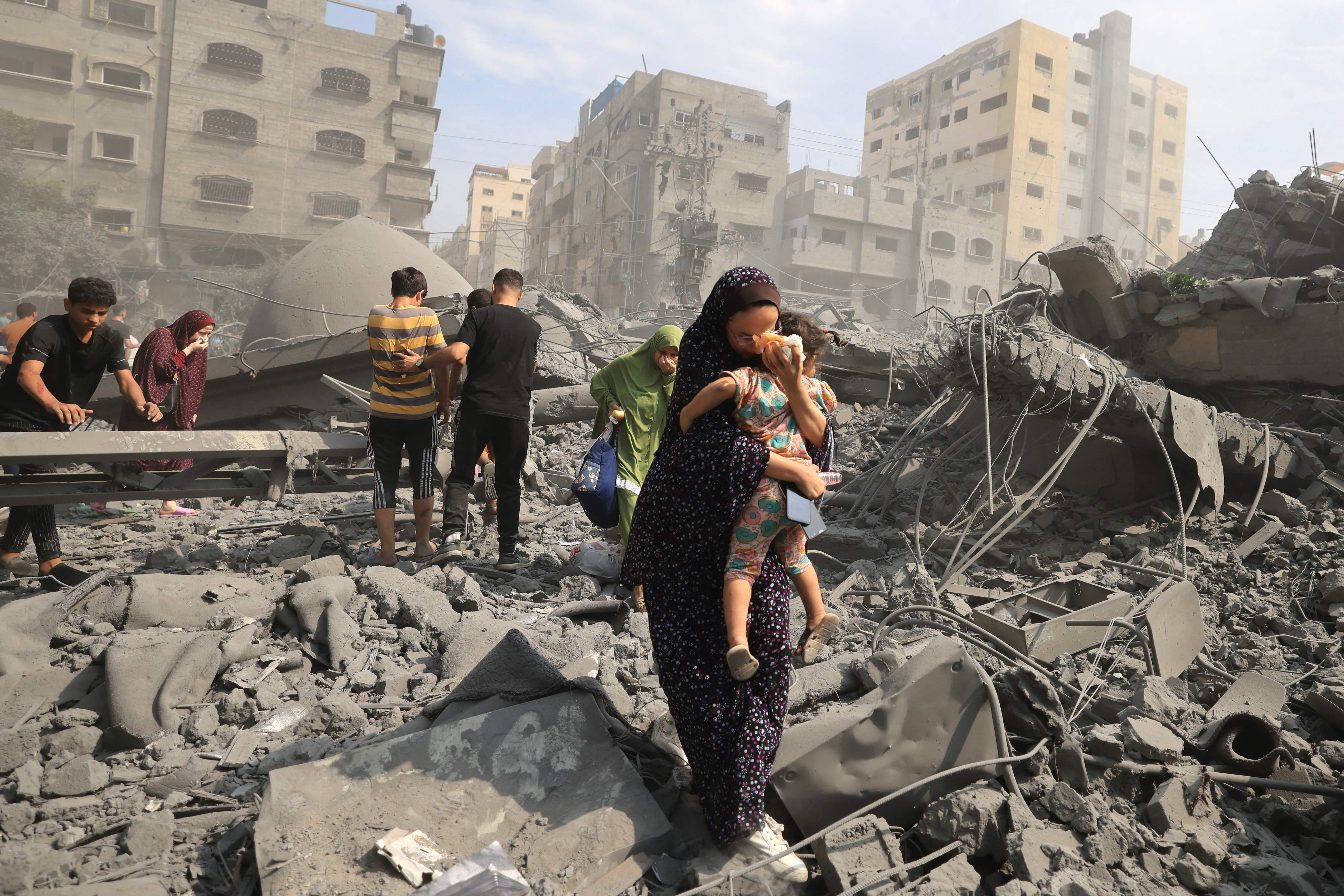
Ever since last Saturday, the bombing has been relentless, with the suffering of those in Gaza compounded by the Israelis cutting off energy and water supplies. One humanitarian worker gave The Independent an account of what it is like to live under one of the most devastating bombardments that the Middle East – and perhaps the world – has ever seen.
“From my home in Gaza City, I see thick pillars of smoke which hang over us, blurring the skies, and I smell gunpowder. I hear children all around crying, terrified, while the blasts get closer and louder,” the worker said.
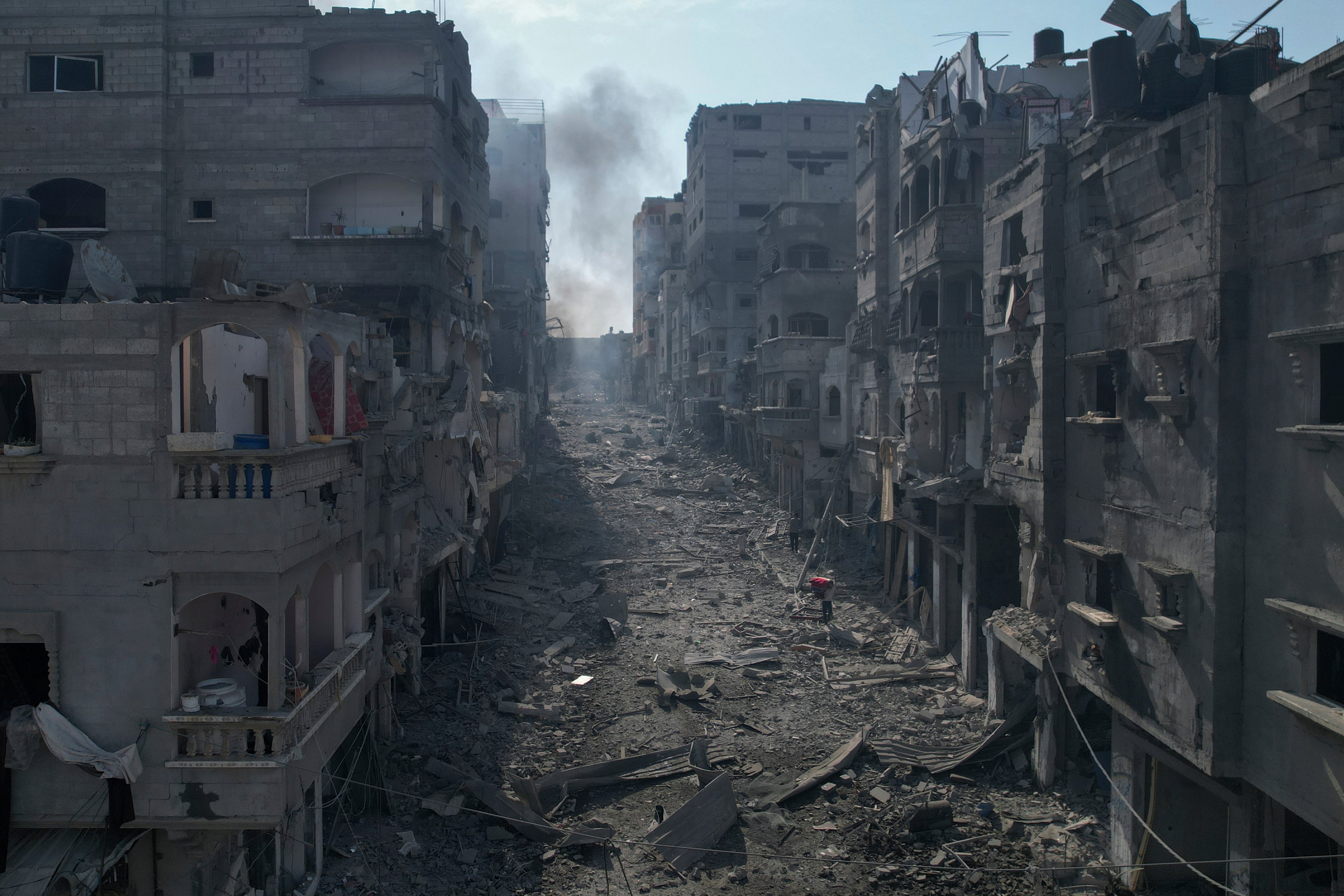
“It’s hard to predict what will be safe areas, or whether ‘safe areas’ exist at all. Survivors of the airstrikes or those who managed to evacuate their homes in time seek refuge in the homes of family, friends, or colleagues,” he continued.
“Many lie dead under the rubble. We are seeing whole families and neighbourhoods wiped out. High-rises, apartments and houses have been levelled to the ground. I do not know whether we will live or die.”
A scene of terror
Across the border in Israel, the IDF painstakingly started to eradicate the presence of Hamas from its soil. As the soldiers – fearful of booby traps – gingerly entered into the liberated kibbutzim such as Nir Oz, not even the most battle-hardened among them could have prepared themselves for the horrors that they saw. It was there that the bodies of the Kedem family were found, butchered in their supposedly safe room for no other reason than because they were Jews.
It was in the kibbutz at Kfar Aza, not far from Nir Am, that some of the greatest horrors of this week-long war were seen by the IDF. Just as General Eisenhower had insisted that the world’s media should visit the liberated concentration camps of Nazi-occupied Europe in order to reveal the savagery of the Third Reich – and indeed a reason for the fighting – so too did the Israelis get the media to visit this kibbutz in order to see what many Israelis start to call an act of genocide.

The air is thick with the scent of bodies decomposing in the sunshine while rocket fire streaks the sky. “When Hamas came here they cut the heads of women, they cut the heads of children,” says Major David Ben Zion, while making a chopping motion towards his neck. “We saw dead babies, girls.”
The 37-year-old was a reservist who had been deployed there since Saturday. The Independent did not see evidence of his claims. But it was a horror that was splashed on the front pages of newspapers all over the world, though some called it an act of Israeli propaganda. With the absence of any evidence, the claim was rescinded by the IDF.
On Thursday, US Secretary of State Antony Blinken promised unwavering support for its fight against what he described as a Hamas “reign of terror” and promised Israel would never be alone. Later he described being overwhelmed after Israeli officials showed him photos of people killed saying “you can’t help but imagine yourself, your family, your loved ones, your friends in that situation, in that predicament and maybe the best world for it for me is overwhelming”.
Later the Israeli government posted pictures of bloodied and burned corpses of babies killed by Hamas.
A crisis unfolds
British security guard Jake Marlowe had not been seen since the invasion early on Saturday morning when he was providing security for the Supernova Festival. Jake left a voice note to a friend describing how he was heroically trying to help people flee from the Hamas gunmen.
“Me and Shlomi are right by Gaza, bro. We are seeing it in front of our eyes, we are rounding up the people from the party now, we are on an ATV [quad bike] and we are telling everyone to get the f*** outta there.”
On Wednesday afternoon, Israel’s Embassy in London confirmed that he had died and his mother Lisa wrote on Facebook that she and her family were “heartbroken”.
On Thursday, Israel’s energy minister Israel Katz doubled down on the “total siege” saying nothing would be allowed into Gaza until the hostages were released. Among the captives are soldiers and civilians, including women, children and the elderly, British and American citizens. Senior Israeli military officials told The Independent that due to the unprecedented nature of the attack, “all options are on the table”.
On Friday, Israel demanded that 1.1 million inhabitants of Gaza should make their way south, a request that seems unachievable, but issued clearly in advance of what is widely anticipated to be a massive ground invasion – a move not seen since 2005. The most recent official death toll from Israel stands at over 1,300. Israel’s military spokesperson has said the government has been able to confirm the identities of 97 people taken hostage into Gaza, but more than 150 are believed to have been taken. The Palestinian Ministry of Health has said that 2,215 Palestinians have now been killed by Israeli strikes since Saturday. It also said more than 8,714 have been injured.
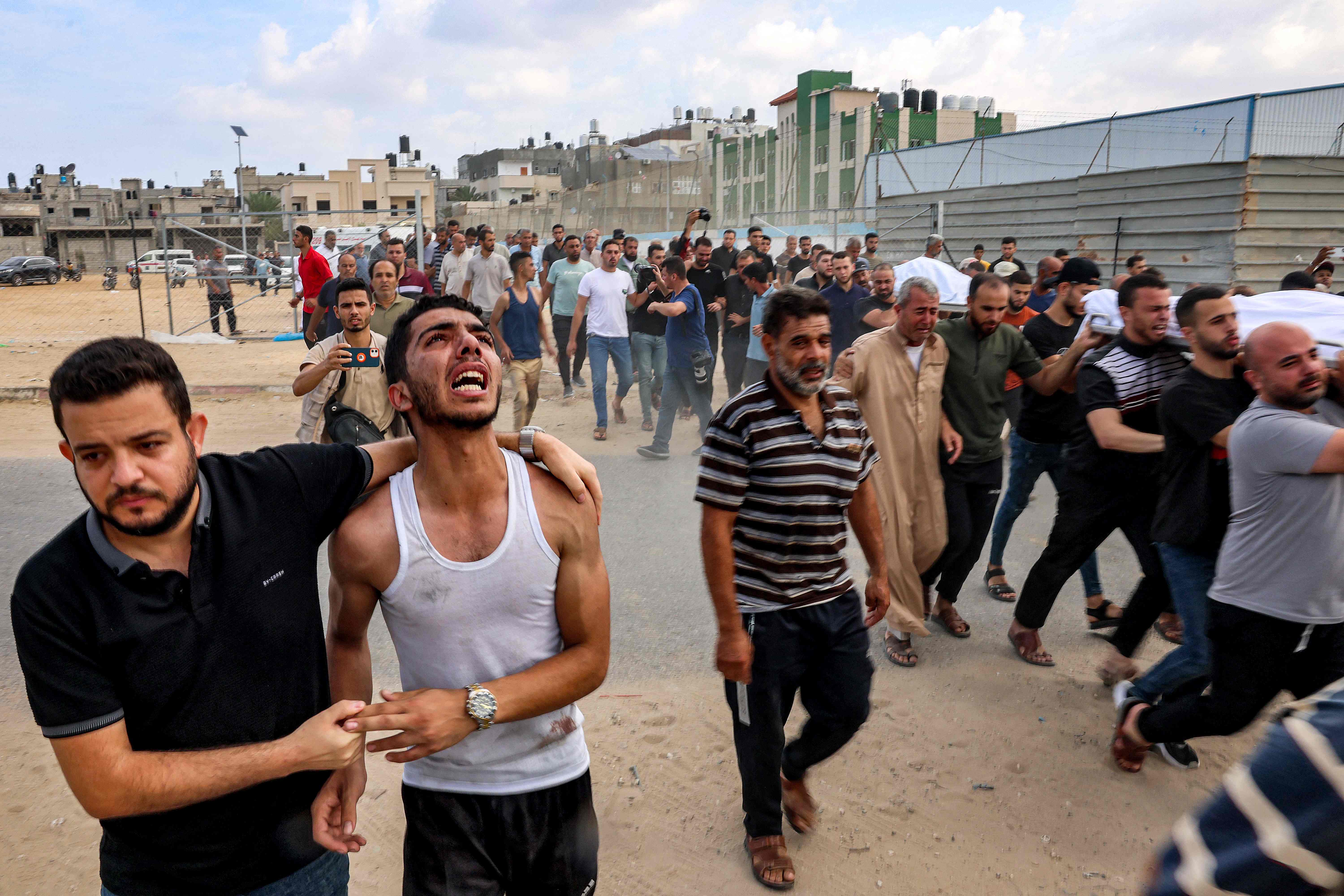
On the ground, Nizar, a father-of-five who lives in Beit Lahia in the north of Gaza who was too scared to give his full name, said a ground invasion would be “our worst nightmare” for families.
“We have no shelter, no safe place to go. My house is already hosting two other families of relatives who fled from the border regions,” he said in desperation.
“We lost two children in the 2008 war, and have been displaced multiple times. Bombing is taking place every minute.”
Palestinian hospitals meanwhile were already struggling to treat the wounded from the relentless Israeli attacks because of pre-existing shortages of medical supplies. Speaking from Gaza City, Mahmoud Shalabi, acting director of UK-based Medical Aid for Palestinians charity, said to The Independent: “A full siege would be catastrophic, we already only have three or four hours of electricity a day, water comes every once every three days, we lack antibiotics, saline even disposable medical gloves.”
Another problem is the lack of electricity in Gaza, he added, which relies on Israel for a large part of its power supplies. “No electricity in a hospital means death,” he said. Already hospitals are having to turn off generators and they are running out of fuel.”
More than 2,000 targets in Gaza have been hit by Israel and Beit Hanon in the northeast of the country where it says Hamas has been staging attacks.
Back in Gaza, civilians had been sent text messages by the Israeli military, urging them to evacuate to different parts of the strip or risk being hit in further bombardments.
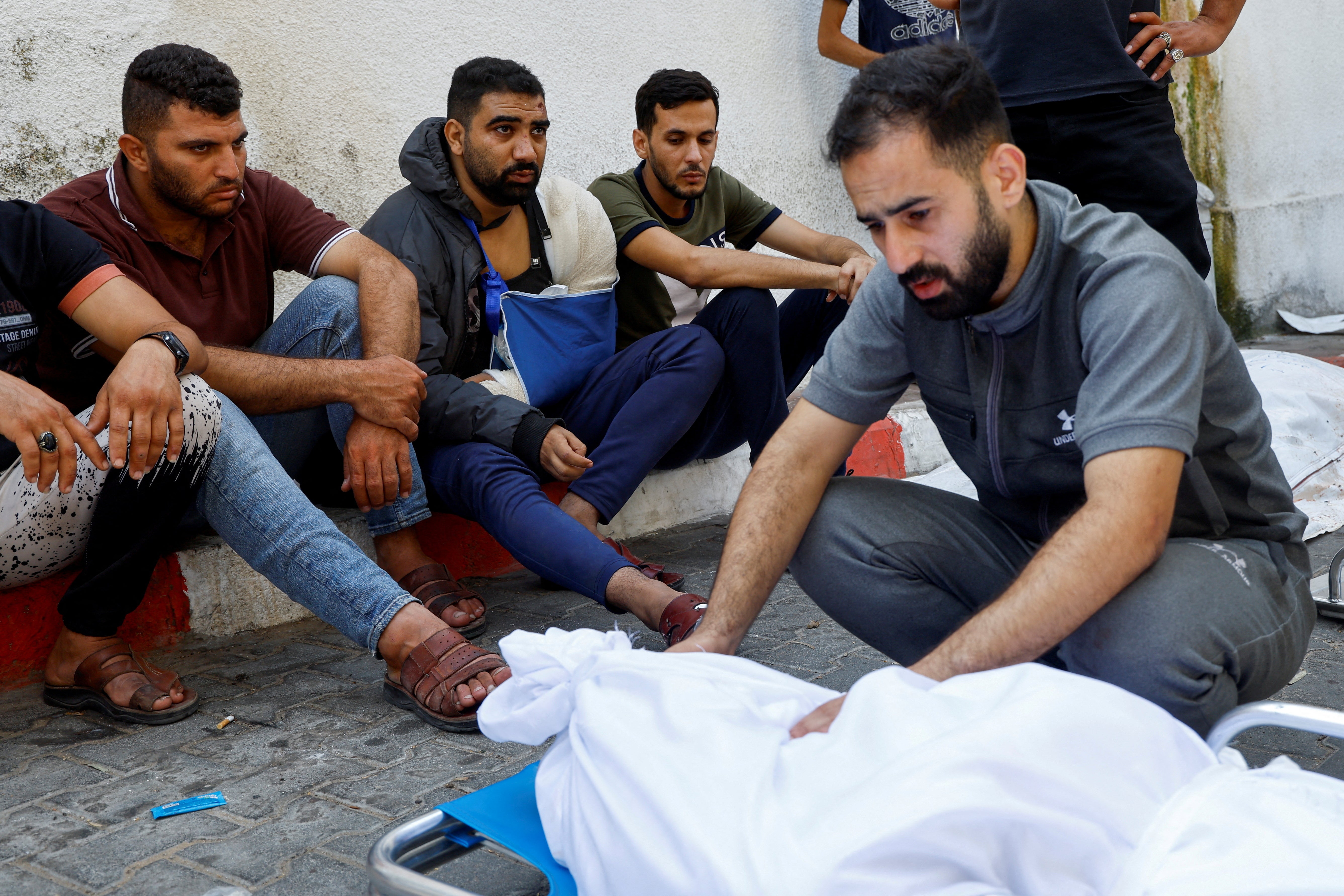
“Literally there is nowhere to go,” said Ms Hussain a Palestinian human rights advocate also in Gaza City, adding that tens of thousands of Palestinians have already been displaced, after receiving text messages telling them to leave their homes.
“There is no safe place here, every place is targeted and can be targeted at any given moment. There are no shelters. Even the United Nations schools, which have received 74,000 people, can be hit. Yesterday, an Unrwa school came under direct fire.”
The nightmare continues
Lenin once said, “There are decades where nothing happens, and there are weeks where decades happen". Although the quotation is oft-repeated, it is done so for a good reason. The last week is undeniably one in which not only the Middle East has changed, but perhaps with it, the world. And it seems likely that there will be more decades to come over the following weeks.
As with all wars, the innocent will suffer the most. The days of dancing in the morning sun will not return for many years to come.
Reporting by Bel Trew
Join our commenting forum
Join thought-provoking conversations, follow other Independent readers and see their replies
Comments